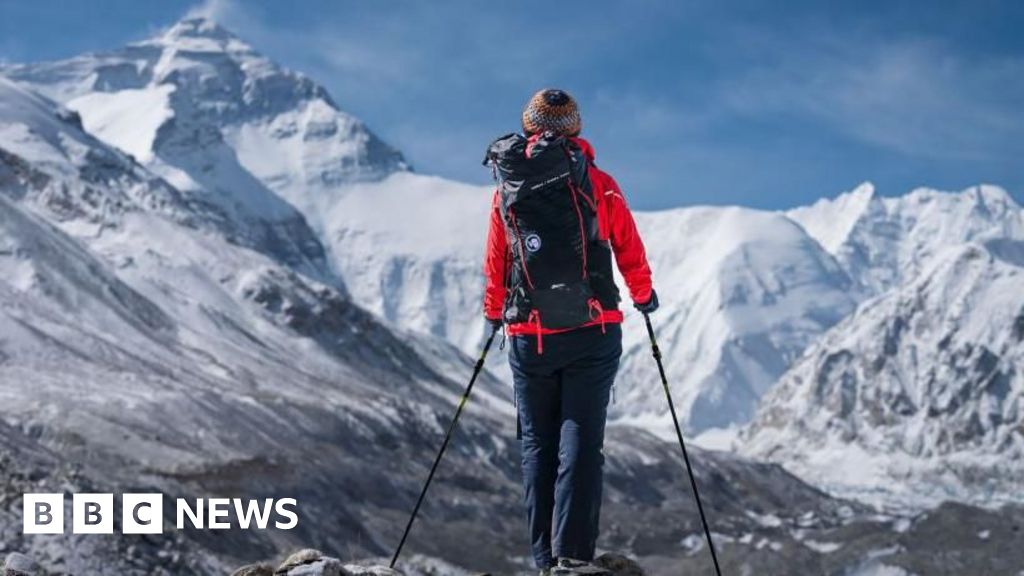
Clear skies, calm winds, and a panoramic view of Himalayan peaks draped in snow are what autumn hikers on Mount Everest have traditionally cherished. However, this idyllic scene is rapidly transforming. Meteorologists have observed that the monsoon season now extends into autumn, traditionally the mountain tourism season. This shift has led to at least one episode of extreme rainfall almost every year for the past decade, making mountain weather increasingly perilous.
Last weekend, a sudden blizzard stranded hundreds of tourists near the eastern face of Everest, subjecting them to freezing temperatures at an altitude exceeding 4,900 meters (16,000 feet). By Tuesday, nearly 600 trekkers had been guided to safety, according to Chinese state media. Tragically, one person succumbed to hypothermia and altitude sickness, though the others were reportedly in good condition.
Impact on Both Sides of Everest
The blizzard’s impact was felt on both sides of Everest. While the Tibetan side saw a coordinated rescue effort, the Nepal side experienced a similar crisis, with a South Korean mountaineer losing his life on Mera Peak. Communication lines were severely disrupted by torrential rains and heavy snowfall, delaying the world’s awareness of the unfolding tragedy. Officials estimate that landslides and flash floods have claimed around 60 lives in Nepal over the past week.
Riten Jangbu Sherpa, a seasoned mountain guide, remarked on the unusual weather patterns, stating, “This is highly unusual for October when we expect the skies to remain clear.” He noted that trekkers have increasingly been caught in unexpected extreme weather in recent years, which has “hampered our trekking and mountaineering business.”
Changing Monsoon Patterns
The monsoon season in northern India and Nepal traditionally spans from June to mid-September. However, Archana Shrestha, deputy director general at Nepal’s Department of Hydrology and Meteorology, highlighted a significant shift. “Our data shows that most of the years in the past decade have had monsoons lasting until the second week of October, which is definitely a change,” she stated.
The tail end of the monsoon now brings heavy rain and snow, as evidenced on October 4 and 5, when damaging precipitation occurred in a short span of time. In the high Himalayas, such extreme weather translates to blizzards and snowstorms, posing a significant risk to trekking, mountaineering, and tourism.
Weather Dynamics and Their Consequences
Last weekend’s sudden weather change saw winds howling, temperatures plummeting, and visibility dropping drastically. The once accessible road, which provided a stunning pitstop for hikers, was buried in snow and rendered impassable. On Cho Oyu, another mountain straddling China and Nepal, climbers on the 8,201-meter peak had to retreat temporarily due to relentless snowfall.
Expedition operator Mingma Sherpa reported, “Now they are back after the heavy snowfall ended,” referring to his six-member team. However, for hikers trapped near the eastern face of Everest, the return journey was fraught with danger. Some trekkers recounted battling hypothermia despite wearing warm clothing, while others feared being buried by the heavy snowfall.
Climate Change and Its Implications
Scientists attribute the increased moisture in the air to global warming, which has led to torrential rains over short periods, often following prolonged dry spells. This is a departure from the past when monsoon showers were evenly spread over four months. Passang, a travel agent in Lhasa, expressed concern, saying, “The weather at this time of the year has been changing every year in recent years, we can’t promise our clients anything.”
Weather experts point to the interaction between South Asian monsoons and westerly disturbances as a contributing factor. The westerly disturbance, a low-pressure system originating in the Mediterranean, carries cold air that brings rain and occasionally snow to northern India, Pakistan, and Nepal. When it collides with warmer, wetter monsoon air, the result can be more extreme weather.
“Westerly disturbances can effectively turbocharge the monsoon,” explained Akshay Deoras, a weather scientist at the University of Reading in the UK.
This phenomenon, traditionally a winter occurrence, is now appearing earlier, during the monsoon and autumn. The deluge of rain and snow in eastern Nepal, where Everest is located, was also attributed to the westerly disturbance, according to officials at Nepal’s meteorology department. They noted that the disturbance had fueled a low-pressure system from the Bay of Bengal, pushing clouds eastward instead of westward.
As the climate continues to change, the implications for Himalayan trekking and mountaineering are profound. The once predictable autumn climbing season is now fraught with uncertainty, challenging both adventurers and the local economies that depend on them. The need for adaptive strategies and enhanced safety measures has never been more urgent.







